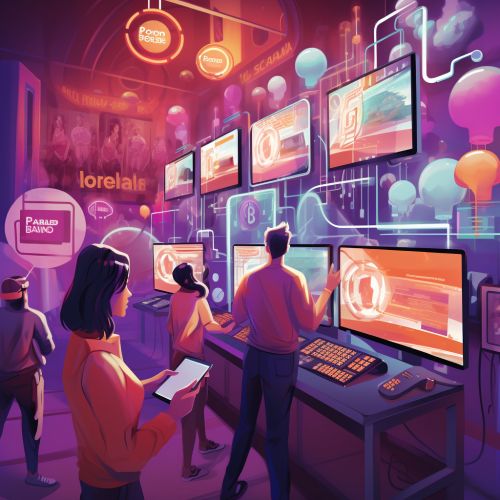Real-Time Bidding
Introduction
Real-Time Bidding (RTB) is a form of programmatic buying, a method of automated, algorithm-driven buying and selling of digital advertising in real time. It is a type of programmatic transaction, which involves the buying and selling of advertising inventory in real time, through an auction-based process.


Overview
RTB is a significant component of the digital advertising ecosystem. It allows advertisers to bid on a per-impression basis, ensuring that they only pay for the ad impressions they deem valuable. This is a departure from traditional digital advertising methods, where advertisers would purchase a fixed number of impressions upfront, without the ability to adjust their campaign in real time based on performance.
The Real-Time Bidding Process
The RTB process begins when a user visits a website that has ad space available for auction. This ad space, or "impression", is then put up for auction in a Supply Side Platform (SSP). The SSP sends out a "bid request" to potential buyers, which includes information about the user (such as their location, age, and browsing history), the website, and the specific ad space available.
Advertisers, or "bidders", use a Demand Side Platform (DSP) to receive these bid requests and decide how much they are willing to pay for the impression. The DSP uses algorithms to analyze the bid request and determine the value of the impression to the advertiser. If the advertiser decides to bid on the impression, the DSP submits a bid back to the SSP.
The SSP then conducts an auction among the received bids. The highest bidder wins the auction and their ad is served to the user. This entire process takes place in the time it takes for a webpage to load, hence the term "real-time".
Benefits of Real-Time Bidding
One of the primary benefits of RTB is its efficiency. Because the process is automated and takes place in real time, advertisers can make decisions about their ad spend instantaneously, based on the most up-to-date data. This allows for more precise targeting and better return on investment.
Another benefit is the transparency it provides. Advertisers have access to detailed data about where their ads are being placed and how they are performing, allowing them to make more informed decisions about their ad spend.
Finally, RTB can lead to improved ad relevancy. Because advertisers can bid on impressions on a per-user basis, they can serve ads that are more relevant to the individual user's interests and behaviors.
Challenges and Criticisms
Despite its benefits, RTB is not without its challenges. One of the main criticisms of RTB is the lack of transparency in the bidding process. While the process is technically transparent, the complexity and speed of the process can make it difficult for advertisers to fully understand where their ads are being placed and how much they are paying for them.
Another challenge is the potential for fraud. Because the process is automated, it can be susceptible to fraudulent practices such as "bid shading" (where bidders artificially lower their bids in order to pay less for impressions) and "domain spoofing" (where fraudulent publishers misrepresent the websites where the ads will be placed).
Finally, there are concerns about privacy. The RTB process involves the collection and use of user data, which has raised concerns about user privacy and data protection.
Future of Real-Time Bidding
The future of RTB is likely to be shaped by ongoing developments in technology, regulation, and industry standards. Advances in artificial intelligence and machine learning are expected to improve the efficiency and effectiveness of the RTB process. At the same time, new regulations and industry standards around data privacy and transparency could impact how RTB is conducted.
Despite these challenges, RTB remains a key component of the digital advertising ecosystem and is likely to continue to evolve in response to changing market dynamics and technological advancements.
